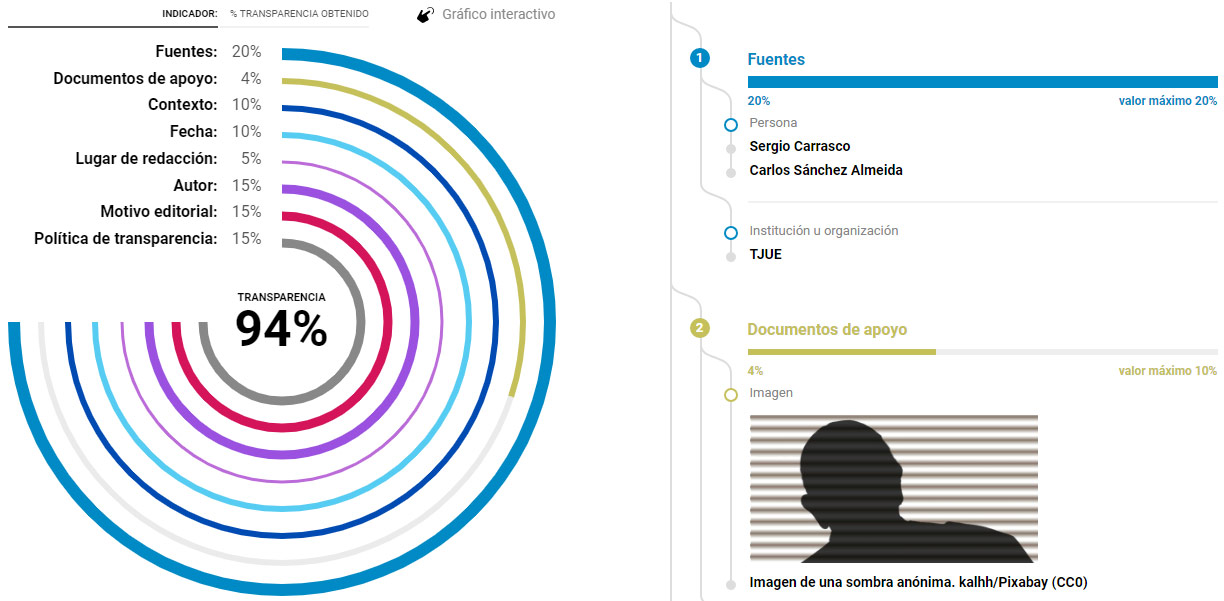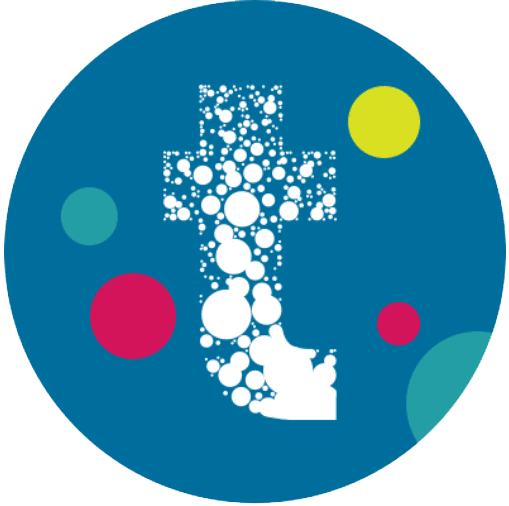If there is any tangible ramification of the digital revolution, this may well be the almost unlimited access to information that it has prompted. This has put journalism in a central role, making it the subject of many debates, but not exactly in a positive way. This is because this avalanche of information is not always up to the expected rigour, independence and honesty expected by a qualified and critical audience.
The media as we knew it fifteen years ago no longer exists, just as the way that we communicate in almost any aspect of our lives is radically different now than it was back then. In the social media age, information flows at a dizzying speed. On one hand, this has favoured the mobilization of social groups and the visibility of active dissent, in addition to consolidating a critical thinking attitude in some parts of our societies. On the other hand, traditional media - immersed in an enormous credibility and financial crisis - has lost most of its role as mediators to the social networks: Citizens who receive vast amounts of raw information and are their own filter, giving less and less value to the catalytic role of the media.
This change of paradigm triggers numerous consequences, but there is one that is very relevant for any democracy: the ever-greater proliferation of mistaken or directly false news, presented to citizens in a language, design and narrative similar to professional journalism – sometimes even coming from the traditional media itself -, damaging citizens’ ability to discern if the news stories that they receive are reliable, written in accordance with the parameters of ethical and rigorous journalism, or mere lies or propaganda. This is damaging for media credibility and, above all, it hampers the construction of a public opinion based on evidence and critical thinking, a key pillar for any democracy.
With this background in mind, Público started a year and a half ago to think about possible solutions to restore citizens’ confidence in good journalism (that is, in journalism; because if it is no good, it is not journalism) and to try to shed some light in this darkness of misinformation.
And what is good journalism, you may rightfully wonder? Some would answer this question by using words like "objectivity", others with "impartiality", "independence" or "truth"... And none of them would be 100% right, or wrong. You will fully understand if you read this quote from Free Speech: Ten Principles for a Connected World (Tusquets) by Timothy Garton Ash, which is probably the best description I have ever read about this profession. And, regarding the topic we are dealing with, these words are particularly relevant:
Trust in the intention of the writer, blogger or broadcaster is crucial. It makes all the difference in the world whether you believe she or he is trying to 'tell it as it is' and 'get it right' or not. I have called this quality 'veracity', but the investigative reporter Nick Davies puts it even more simply: "for journalists, the defining value is honesty - the attempt to tell the truth. That is our primary purpose.
Thus, if we assume this premise, we will understand that journalism is not an exact science and that, therefore, even though journalists must always aim to be as much accurate as possible, they are not error-free. This is a complicated starting point to invite you, readers, to trust journalists; but at the same time, it should take us, who dedicate ourselves to this business, to a point of no return.
This point of no return is the conclusion that we, the media, must commit ourselves to the strict standards of transparency that we demand from Governments, companies and civil society organizations. Público believes that being transparent about our work, about our procedures, is the only way that those who read us will have the certainty that they are faced with rigorous journalism, most likely imperfect and fallible, but honest and human.
To make this possible, we have developed a Transparent Journalism Tool (TJ Tool) which produces a Transparency Map for every piece of information that we publish.

It is a graphic design that allows readers to take a look inside the information creation process: from the very first moment in which we, as media, start paying attention to a specific story (Why do we cover a particular story instead of others?) until the moment that we publish or update the article.
The Map assigns a grade of transparency according to the amount of detail that journalists or authors add about each of the eight Editorial Transparency Indicators that provide the final value: why do we cover a story, how many people has been assigned to produce it and who are they, where it was written, when it was written, which sources where consulted, which context elements where used, which documents support the information, and if the publisher has a transparent and public editorial policy. Each indicator has a maximum value so, in the best-case scenario, a piece of information could reach a transparency score of 100%.
The final value is by no means an indicator about the quality of the information; rather it is about the transparency in communicating the informative process behind the production of the new story. For example, an exclusive investigation based on sources whose identity must be preserved for security reasons will obtain the lowest value for this transparency indicator, given the circumstance that the reader cannot track the consulted sources. Nevertheless, this doesn’t mean that this piece of information is of inferior quality than another produced from a news agency story. The difference is that in the second scenario, when the TJ Tool assesses the source of the information, which is one or several news agencies, it will result in a little higher value of transparency, and will appear as such in the Transparency Map available to the reader. The sources will only reach the maximum score when the full names of mentioned people and organizations or institutions are given.
This dissection of the information is what some international organizations that advocate good journalistic practices call information traceability. The same procedure is used with food, for example, to trace its journey from its source to the shop. In the event of an alert, the system allows health authorities to "retrace the steps" in order to find the exact point where the problem started. The buyer can have access to all this journey through the product labelling and can perfectly understand what they are consuming.
What is the contribution of Público's tool?

There are many tools to help citizens verify information found in social media and user-generated content. Most of them are based on three formulas: algorithms that calculate a story’s probability of being true, fact-checking systems and educational resources. All these instruments analyze the information once it has been published; if the story is false, the damage has already been made. Science magazine published last March the result of a MIT research about the dissemination of fake content. It concluded that on Twitter true news hardly spread to 1.000 people, whilst false content reach more than 10.000, and that people and not bots are responsible for it.
For that reason, Público is radically different and a pioneer. Instead of trying to verify information after being released, our system presents a complete map of traceability so the reader, when opening the information, can be sure that they have a piece of journalistic work that can be tracked, if wished.
Therefore, TJ Tool represents a big change and an original and unique proposal in the way we approach the misinformation challenge. It is based on the news organization's willingness to implement a complete disclosure policy of their work.
In fact, it is an open source code tool (and includes a WordPress plugin that is still being tested) with the goal of being globally shared within the media industry. This is a first step to start a transparent news movement to restore citizens trust in journalism, the credibility of journalists, and the media’s ability to play its role as a watchdog. And, furthermore, to provide advertisers with a tool to easily identify, reward and get involved with quality journalism.
TJ Tool is partially funded by Google DNI and includes Artificial Intelligence developed by the Group for Advanced Interactive Tools (GHIA) from Universidad Autónoma of Madrid for this project.
Comentarios
<% if(canWriteComments) { %> <% } %>Comentarios:
<% if(_.allKeys(comments).length > 0) { %> <% _.each(comments, function(comment) { %>-
<% if(comment.user.image) { %>
![<%= comment.user.username %>]() <% } else { %>
<%= comment.user.firstLetter %>
<% } %>
<% } else { %>
<%= comment.user.firstLetter %>
<% } %>
<%= comment.user.username %>
<%= comment.published %>
<%= comment.dateTime %>
<%= comment.text %>
Responder
<% if(_.allKeys(comment.children.models).length > 0) { %>
<% }); %>
<% } else { %>
- No hay comentarios para esta noticia.
<% } %>
Mostrar más comentarios<% _.each(comment.children.models, function(children) { %> <% children = children.toJSON() %>-
<% if(children.user.image) { %>
![<%= children.user.username %>]() <% } else { %>
<%= children.user.firstLetter %>
<% } %>
<% } else { %>
<%= children.user.firstLetter %>
<% } %>
<% if(children.parent.id != comment.id) { %>
en respuesta a <%= children.parent.username %>
<% } %>
<%= children.user.username %>
<%= children.published %>
<%= children.dateTime %>
<%= children.text %>
Responder
<% }); %>
<% } %> <% if(canWriteComments) { %> <% } %>